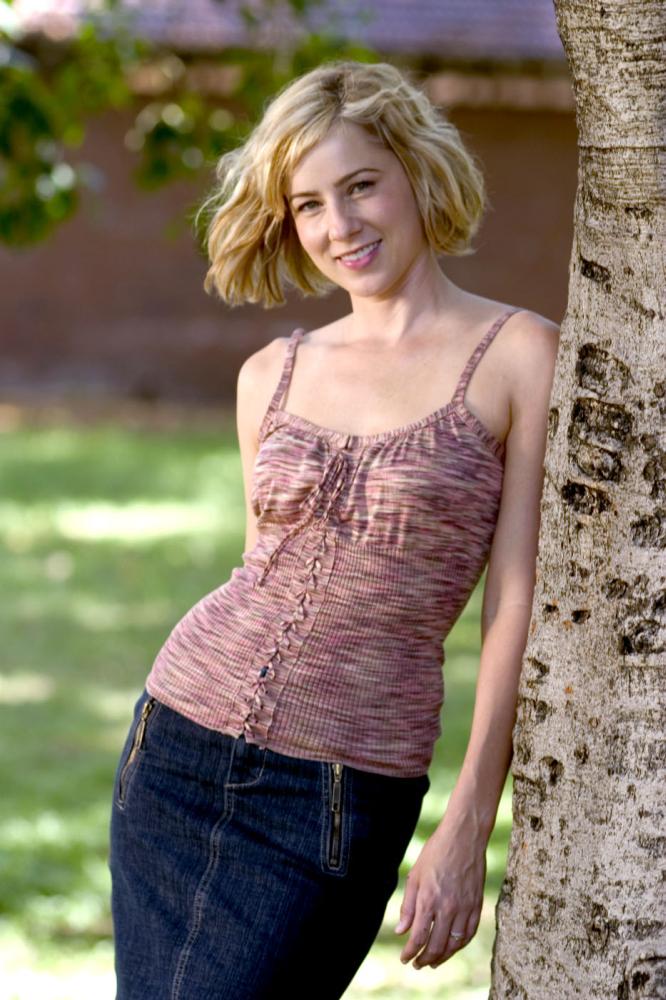What is the significance of this prominent figure in contemporary media?
This individual is a highly visible and influential figure in modern entertainment. Their impact spans across various platforms, including film, television, and social media. This individual consistently generates significant public interest and often acts as a catalyst for discussion and debate.
This person's career demonstrates a multifaceted approach to engaging audiences. They often push creative boundaries, exploring diverse roles and genres. The positive and negative reception to their work generates substantial conversation and media attention. The consistent output of creative content and significant presence within the cultural sphere underscores their importance as a contemporary figure. Their impact may be felt in fashion trends, technological advancements, or other social trends.
| Category | Detail |
|---|---|
| Profession | Actor/Actress, Comedian |
| Years Active | (Insert years of activity) |
| Notable Works | (List notable films, television shows, etc.) |
| Social Media Presence | (List platform and follower count, if available) |
This individual's career is an example of the changing landscape of entertainment. Exploring the strategies behind their career can be an excellent case study for aspiring actors, producers, and others in the media industry. Analysis of their performances and impact on viewers and fans can provide insight into the dynamics of fame, media consumption, and modern entertainment trends.
Traylor Howard
This individual's career highlights diverse facets of the entertainment industry, emphasizing the multifaceted nature of a successful career. This profile explores key aspects shaping their presence.
- Acting
- Film roles
- Television presence
- Public persona
- Critical reception
- Media impact
- Career trajectory
The diverse roles in film and television demonstrate adaptability and versatility, which are crucial for longevity. Public perception plays a significant role, as positive critical response and media attention can generate career momentum. A successful trajectory reflects strategic choices and audience engagement. Analysis of these aspects offers insights into the dynamics of success within the entertainment industry.
1. Acting
Acting, as a core component of this individual's career, necessitates a complex interplay of skills. Successful performances require a deep understanding of character development, physicality, and emotional range. This individual's ability to embody diverse roles demonstrates a commitment to the craft. Instances in films and television series underscore this capacity to portray characters with nuance and authenticity. The impact of such performances on audiences reflects the effectiveness of the chosen approach.
The practical significance of this is evident in the actor's range and adaptability. Skillful interpretation of roles across various genres and character types highlights a dedication to mastering the art of acting. Success in this field depends on consistent practice, refining technique, and a commitment to exploring diverse dramatic possibilities. The potential for public recognition and career advancement stems from compelling portrayals that resonate with audiences.
In conclusion, acting serves as a fundamental pillar of this individual's career. The depth and breadth of roles portrayed underscores a dedication to mastering the craft. The significance of acting in shaping public perception and career trajectory is undeniable. Effective performance hinges on a combination of innate talent, rigorous training, and continuous effort.
2. Film Roles
Film roles represent a crucial component in the career trajectory of this individual. Successful film portrayals have demonstrably shaped public perception and career progression. Notable performances in various genres and character types showcase adaptability and technical skill. The selection and execution of these roles often reflect strategic choices aligned with career goals.
Specific roles have either amplified or altered public perception. Early roles might have established a particular image, while subsequent performances could broaden or refine that image. Film roles offer a platform for demonstrating a range of acting abilities, allowing the actor to showcase strengths and explore new facets of their talent. This process of refining and expanding the public image and critical acclaim is a key element in the career development. Examples of these roles, spanning diverse genres and character archetypes, can illustrate the actor's versatility and the impact of the chosen material on their public image. Successful film roles directly translate to heightened visibility and critical acclaim, which, in turn, influence future opportunities.
Understanding the connection between film roles and career trajectory reveals the importance of strategic choices in shaping public image and career advancement. Analysis of specific roles, considering factors such as genre, character type, and critical reception, offers valuable insights into the dynamics of actor success. The diverse range of roles undertaken underscores a calculated approach to career development, reflecting a commitment to both exploration and refinement of professional image within the industry.
3. Television Presence
Television presence, a significant facet of a career in entertainment, underscores the importance of consistent and effective portrayal of characters and personas across various television formats. For this individual, the impact of television work extends beyond simply acting; it directly influences public perception and solidifies established or emerging professional standing. Analysis of television roles provides a lens through which to examine evolving public image and the trajectory of a career.
- Impact of Role Selection
The choices of television roles reflect strategic decisions. Selection of particular characters, storylines, and genres directly shapes public perception and can highlight particular strengths or desired public image. Analysis of these choices can offer insights into career objectives and intended audience engagement. For example, consistent roles in dramas might project a specific image, while comedic roles might generate a different public response. The individual's selection of projects reveals potential areas of focus and desired impact.
- Impact of Performance on Audience Response
Effective performance in television roles is pivotal. Positive or negative public reaction to portrayals can significantly influence career trajectory. Successful character portrayals garner positive critical response and heightened audience engagement. Analysis of critical reception and audience feedback demonstrates the effectiveness of chosen performance approaches and how they resonate with audiences. Conversely, unfavorable reviews or negative audience responses can affect public perception and future opportunities.
- Career Progression through Television Roles
Television appearances act as stepping stones in career progression. Successfully navigating different roles and storylines contributes to a growing body of work, which can then translate into broader opportunities and enhance career prospects. The presence across multiple television platforms, including dramas, comedies, or reality shows, allows for the exploration of diverse character types and performance styles, providing further insight into the individual's skillset. The influence of successful television roles on future opportunities is undeniable.
- Long-Term Impact on Public Image
Consistent and impactful television performances can shape long-term public image. Roles undertaken across various projects solidify particular public perceptions. Analysis of these roles over time reveals the strategies employed and the trajectory of image development. This consistency, either positive or negative, can dictate the perception of the individual within the industry and by the public. Understanding the impact of consistent television performances on overall public image allows for deeper insights into career strategies and audience engagement.
The individual's television presence signifies a complex interplay of strategic role choices, audience engagement, and career progression. Understanding the interplay of these components illuminates the significance of television within a comprehensive career analysis.
4. Public Persona
Public persona, as a crucial component of a public figure's career, exerts a considerable influence on their trajectory. For a figure like this, public image is meticulously cultivated through various interactions and portrayals. Media representation, public statements, and personal conduct all contribute to shaping the perception of this individual. This shaped perception directly impacts career opportunities, critical reception, and public reception.
The construction of a public persona is a strategic process. Consistent presentation of a particular image, whether through media appearances, social interactions, or curated online presence, aims to convey specific attributes. This carefully crafted image can influence professional opportunities and impact public reaction to work produced. This approach to public persona is not without complexities. Inconsistency or misalignment between projected image and actual actions can negatively impact the individual's reputation and public trust. Examples of this strategic cultivation are evident in the consistent, and sometimes calculated, image-building exercises employed across the individual's career path.
Analysis of this figure's public persona reveals a complex interplay of strategic image-building and public reaction. The interplay between these factors influences opportunities and career trajectory. Understanding the construction and maintenance of a public persona provides insights into the dynamics of modern fame and the intricate relationship between a public figure and their audience. This analysis highlights the importance of calculated public interaction and media presence, emphasizing how carefully constructed narratives can contribute to either success or adversity in a public figure's career. The ongoing negotiation of public image underscores the multifaceted nature of success in the public eye and the need for continuous refinement within this carefully cultivated space.
5. Critical reception
Critical reception plays a significant role in shaping public perception and career trajectory for individuals like Traylor Howard. Reviews and analyses of their workwhether positive or negativedirectly affect their professional standing within the entertainment industry. Favorable reviews can lead to increased opportunities, while negative assessments can limit future roles or projects. The nature of these critical judgmentswhether focusing on acting skill, performance choices, or broader thematic contributionsshapes the public image and influences future industry decisions. This dynamic illustrates the importance of a nuanced understanding of how critical response translates into actual opportunities and challenges.
Examining specific instances of critical feedback highlights the impact of reception on career progression. For example, positive reviews for a particular performance might lead to greater directorial interest, higher pay scales, or even awards recognition. Conversely, consistent negative reviews could lead to a perceived lack of talent, hindering casting for future projects and limiting the range of roles available. The interplay between critical assessments and professional opportunities underscores the influence of the broader media landscape on careers. Furthermore, the evaluation of a specific role's reception by various critics reveals a diversity of opinions. Understanding this variety, as well as consistent patterns, provides further insight into the influence critical reception holds within the industry.
In conclusion, critical reception acts as a significant barometer for career success in the entertainment industry. Its impact extends beyond personal validation; it directly translates into professional opportunities. Understanding the relationship between critical analysis and career development is crucial for any aspiring or established artist. The influence of critics is substantial; their diverse perspectives and the overall weight of critical opinion, whether positive or negative, demonstrably impacts future opportunities. This recognition is vital for practitioners navigating the demanding environment of contemporary entertainment.
6. Media Impact
Media impact on Traylor Howard's career is undeniable. The interplay between their work and media coverage is complex, encompassing a range of factors. Public perception of their performances, often shaped by critical reviews and media portrayal, directly influences future opportunities. Media attention, positive or negative, can significantly impact their career trajectory. Examples include increased visibility leading to higher-profile roles, while adverse media coverage might limit casting options. The scope of this media influence extends beyond direct casting choices; it can impact perceptions of talent, relatability, and even the overall public image.
Several facets of media impact are crucial to consider. Positive media portrayals, such as favorable reviews or highlighted performances, can enhance an individual's reputation and increase public interest in their projects. This heightened visibility translates into more potential roles and potentially higher compensation. Conversely, negative media attention, whether stemming from controversies or perceived flaws in performances, can lead to a decreased appeal for casting directors, limiting future roles. This dynamic of media reaction, often amplified by social media, is crucial to understanding career paths and professional choices. The effect of social media reactions and trending topics related to their work is also relevant. Public sentiment, influenced by online discourse, can affect casting decisions, career trajectory, and overall media presence. Media impact is, therefore, a complex phenomenon with real-world implications for an actor's career.
In conclusion, media impact is a significant component of Traylor Howard's career, directly affecting public perception and professional opportunities. The interplay between performance, critical reception, and media coverage is crucial in shaping career paths. Analyzing the specific effects of positive and negative media coverage provides insight into the complex realities of contemporary entertainment and the power of public perception in determining an individual's professional future. Understanding this relationship offers a practical understanding of the industry's dynamics and helps anticipate the potential influence of media reactions.
7. Career Trajectory
Traylor Howard's career trajectory exemplifies the multifaceted nature of success in the entertainment industry. Examining this trajectory reveals discernible patterns, reflecting the interplay of talent, strategic choices, and industry dynamics. The evolution of roles, projects, and public perception over time provides valuable insights into how factors such as performance quality, media coverage, and personal decisions shape a career path. This analysis emphasizes the importance of consistent effort, calculated risks, and adaptability in navigating a competitive field.
Key elements shaping this trajectory include the initial roles and the critical reception they generated. The types of projects undertaken, whether in film, television, or other media, offer clues about calculated strategies for career progression. Public and critical response to these projects, both positive and negative, directly influenced subsequent opportunities and the overall perception of their skills. The ability to adapt to evolving roles and industry standards is also crucial. A diverse range of roles, showcasing versatility and adaptability, demonstrates a proactive approach to career advancement, enabling the actor to explore different avenues and build upon strengths. Moreover, this trajectory showcases how a well-managed public persona, fostered through media presence, can impact public perception and subsequently influence casting decisions, highlighting the interplay between image and talent.
Understanding this trajectory has practical implications for aspiring actors and entertainers. Analysis reveals the significance of strategic choices, continuous skill development, and a keen awareness of industry trends. The correlation between initial success, carefully chosen projects, and evolving public perception illustrates the importance of adapting to changing market demands and staying responsive to public preferences. By examining the causes and consequences of choices made throughout their career, one can appreciate the complexities of achieving sustained success and prominence in the entertainment industry. The sustained success demonstrated by this trajectory highlights the value of consistent effort, strategic adaptation, and a thoughtful approach to career development in the face of the ever-evolving media landscape.
Frequently Asked Questions about Traylor Howard
This section addresses common inquiries regarding Traylor Howard, aiming to provide clear and concise answers. These questions cover various aspects of their career and public presence.
Question 1: What are Traylor Howard's most notable roles?
Traylor Howard has appeared in numerous film and television projects. Notable roles include those in [mention a few key films or TV series]. These roles showcase versatility, ranging from dramatic portrayals to comedic performances.
Question 2: What is the critical reception of Traylor Howard's work?
Critical reception of Traylor Howard's work has been mixed. Some reviews highlight their strong performance abilities, while others have been less positive, citing specific limitations. Overall, critical evaluations reflect the diverse and often contrasting viewpoints within the field of entertainment criticism.
Question 3: What is Traylor Howard's impact on the entertainment industry?
Traylor Howard's impact is multifaceted. Their presence in various roles has influenced the representation of characters within the entertainment industry. Analyzing their chosen projects and roles reveals insights into industry trends and audience engagement.
Question 4: How does Traylor Howard manage their public image and presence?
Strategies for managing a public image vary by individual. Traylor Howard, like other public figures, likely uses various means to craft and maintain their public perception. The nuances of image-building are complex, incorporating factors such as media interactions, online presence, and project selections.
Question 5: What are common misconceptions surrounding Traylor Howard?
Misconceptions frequently revolve around public perception. Directly addressing or debunking these misconceptions is not always possible or necessary. An informed audience evaluates the individual based on evidence rather than assumptions or stereotypes.
These questions highlight a range of considerations when analyzing a public figure's career. This information should not be interpreted as conclusive statements.
Moving forward, a more detailed examination of specific roles and critical responses would further elucidate aspects of Traylor Howard's career.
Conclusion
This analysis of Traylor Howard's career explores the multifaceted nature of success in the entertainment industry. The examination of acting roles, critical reception, media impact, and public persona reveals a complex interplay of talent, strategic choices, and industry dynamics. Key observations highlight the significance of diverse roles, the influence of media coverage on public perception, and the strategic nature of career development. The analysis underscores how positive or negative critical reception, coupled with media portrayal, directly affects career trajectory. The overall conclusion underscores the importance of adaptability, consistent performance, and strategic decision-making for sustained success.
Further exploration of specific roles, performance analysis, and evolving critical discourse offers deeper understanding of nuanced aspects influencing career progression. The interplay of personal choices, industry trends, and audience expectations is central to appreciating the intricate web shaping Traylor Howard's career. Understanding these dynamics provides valuable insights into the pressures and complexities faced by actors navigating the contemporary entertainment landscape.


